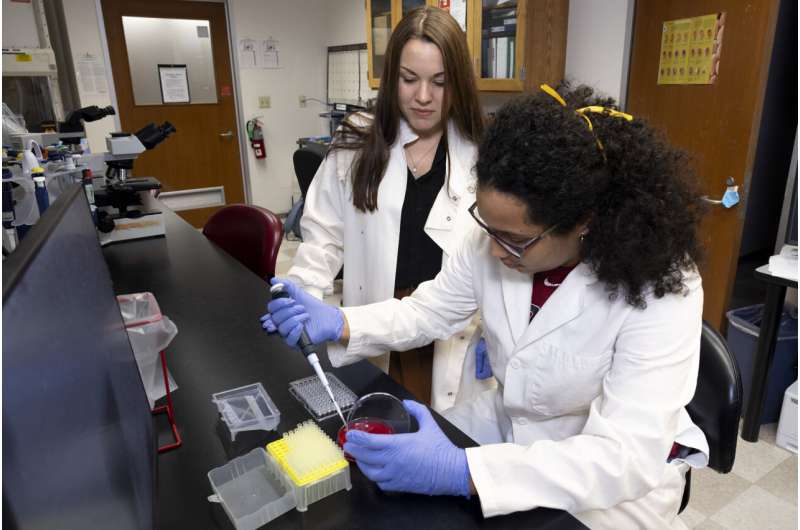Researchers at the University of Arkansas have demonstrated that probiotics could serve as an effective alternative to formaldehyde in poultry hatcheries. This innovative approach aims to protect hatching chicks from harmful bacterial diseases while maintaining beneficial microorganisms in the environment. The study, led by Danielle Graham, assistant professor of poultry science, highlights a significant shift in how hatcheries could manage microbial contamination.
Probiotics as a Solution to Bacterial Challenges
Hatching eggs are vulnerable to bacterial infections from pathogens such as Escherichia coli and Enterococcus. These microorganisms can infiltrate eggs through tiny pores or cracks, leading to severe complications, including the potential for eggs to burst, which spreads bacteria throughout the hatch cabinets. Currently, the industry standard for disinfecting hatch cabinets involves the use of formaldehyde, a method that indiscriminately kills all bacteria—both harmful and beneficial.
In their research, published in the journal Poultry Science, Graham and her team from the Dale Bumpers College of Agricultural, Food and Life Sciences sought to eliminate pathogenic bacteria while preserving beneficial microbial populations. The study revealed that certain strains of probiotics, specifically two strains of Bacillus amyloliquefaciens, effectively reduced harmful bacteria levels comparable to those achieved through formaldehyde fumigation.
“When you provide a warm, moist environment and put thousands of eggs in the same location, it creates the perfect environment for microbial proliferation and transmission of pathogens,” Graham explained. The research involved applying these probiotic strains in small-scale experimental hatch cabinets, demonstrating one strain’s effectiveness in reducing gram-negative bacteria compared to control environments.
Positive Outcomes and Future Research Directions
The probiotics were introduced into the hatch cabinets using compressed air, strategically placed about 25 centimeters in front of the ventilation fan during the hatching phase. Notably, one of the probiotic strains was also shown to mitigate gram-positive bacteria, such as Enterococcus faecalis, leading to decreased colonization in the gastrointestinal tract of the chicks after hatching.
In addition to reducing harmful bacteria, the use of probiotics has been linked to lower risks of respiratory damage in chicks, a common issue associated with formaldehyde exposure. Graham emphasized the importance of a multifaceted approach to replace formaldehyde in commercial hatcheries, stating, “Right now, it is the most effective tool the industry has. Our hope is to continue our research to identify additional solutions that may be additive to the probiotic approach we have been optimizing.”
The study titled “Feasibility of applying Bacillus amyloliquefaciens-derived solid state fermentation products into the hatch cabinet environment as a method to mitigate the microbial bloom during the hatching phase” included contributions from co-authors Callie Selby, Aaron J. Forga, Billy M. Hargis, and Christine N. Vuong, among others.
As the poultry industry continues to seek safer and more effective alternatives to traditional disinfectants, this research could pave the way for innovations in hatchery management and chick health, ultimately benefiting the broader agricultural landscape.
